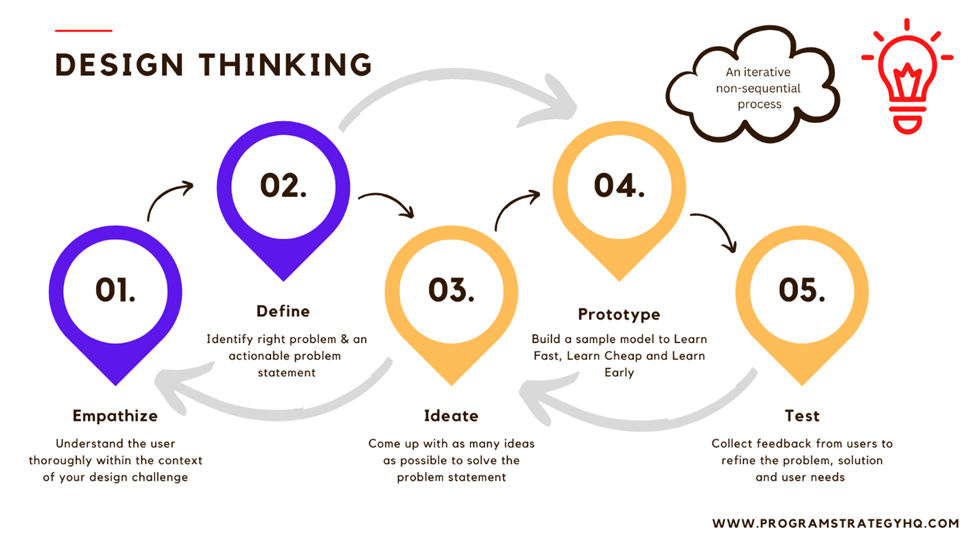Understanding the Design Thinking Process in UX
 Babatunde Alaran
Babatunde Alaran
Let me tell you something new this week because last week, I wrote about UX design, and with no further ado, I will be writing you about the UX case study. Let us get started.
What is a UX Case Study?
It is the process of putting all your UX design documents in one particular documentation; starting from the research phase to the usability testing phase, using the design thinking process.
What is the Design Thinking Process?
It is the art of understanding the users, challenging assumptions, redefining the problem, and creating a solution to the UX design. However, it also starts with the psychology of knowing the user’s goal, frustration, and expectation. And to proffer a solution to the problem. It has five stages
Empathize: Research your user’s needs and goals
Define: Define your user’s needs and problems
Ideate: Challenge assumption
Prototype: Creating a solution
Test: Try out your solution
However, when coming up with a solution, it is a prerequisite to know the reason why such a problem needs to be solved and how to make it better. So, the first phase is to empathize with the user by developing research, just to know their views, frustration, pain points, and opinions concerning the product. The research can use any of the research methodologies, which are both qualitative and quantitative research.
From the New York Times case study that was curated by Johny Vino, and was published on UX Collective, the designer carried out the research first, which is the primary objective of any design thinking process. Empathizing is the art of knowing where the users are and how they perform to the product. For the NYTimes case study, the designer pointed out the scope of the users.
The designer also highlighted the key insight from the 2017 Reuters Digital News Report, by understanding their pain point, and their day-to-day challenge.
Also created research, and he created the empathy map, where he mapped the responses and thoughts of every user and their emotional connection with the NYTimes app. Also created a user journey to help the user develop a more realistic and intuitive way to navigate the app
After the research phase which is the empathize of the Design thinking process, the designer came up with the ideation phase, which means solving the problem. He solved the problem with the design principles of developing a relationship between the results.
Meanwhile, after the ideation phase, the designer carried out the prototype phase, which is the fourth stage in the design thinking process. This stage is when the designer begins to draw our sketch of the app and solve the problem visually. In this stage, we also have the low-fidelity and the high-fidelity prototype.
The low fidelity is also called the wireframe. As the word low implies, it is the small version of the visual. It gives the user a low representation of what the user interface looks. Hence, the high fidelity is the real version of the visual element that would be sent out for testing. It is the entire representation of the app. In this redesign of the NYTimes, the designer shared the experience of the usability testing before the final design.
So, my three points in reading the NYTimes redesign from Johny Vino is to first research the target audience and their frustration about the product. Secondly, define the problem and ideate a solution to tackle the problem. Thirdly, to create a meaningful prototype for the product.
Thus, as a UX designer, it is necessary and highly important to know the design thinking process because it helps you solve the problem of any product and also gives you better insight into the user, on how they feel and react, by crafting out the empathy mapping of the product.
Subscribe to my newsletter
Read articles from Babatunde Alaran directly inside your inbox. Subscribe to the newsletter, and don't miss out.
Written by
